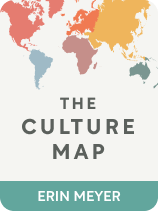

This article is an excerpt from the Shortform book guide to "The Culture Map" by Erin Meyer. Shortform has the world's best summaries and analyses of books you should be reading.
Like this article? Sign up for a free trial here .
Is there such a thing as a Western way of thinking? What is the difference between theoretical and empirical methods of reasoning? Which style of thinking does your culture tend to use?
Cultural communication expert Erin Meyer divides non-Asian cultures into two broad patterns of thinking or reasoning. Specifically, Meyer argues that Western and Latin American cultures tend to use either theoretical or empirical thinking. Latin Americans and Germanic countries fall in the middle of this spectrum.
In this article, we’ll look at the two variations of Western thinking or reasoning, according to Erin Meyer.
Defining Theoretical Cultures
Theoretical cultures (notably, Latin European countries) trend towards using deductive reasoning when they persuade. When you reason deductively, you first formulate a general hypothesis or concept and then deduce a conclusion from this concept. One common example of deductive reasoning is this: All men are mortal. Socrates is a man. As such, Socrates is mortal. You draw the final conclusion (Socrates is mortal) by combining the first two principles.
Meyer posits that in business, a cultural pattern of theoretical thinking translates to a heavier emphasis on the reasons behind a problem. If you give a presentation, a theoretical thinker might ask questions about the methodology you used to gather your data.
Meyer argues that the pattern of reasoning that dominates in a theoretical culture was also influenced by philosophy.
One major philosopher Meyer pinpoints as a major influence on Western thinking is France’s René Descartes. (Shortform note: Meyer points to Descartes’s views on scientific reasoning as evidence of his way of thinking, but a better way to explain his thought process might be this: Descartes is the originator of the phrase “I think, therefore I am”—perhaps the most classic example of deductive reasoning. The fact that Descartes’s views on theoretical thinking influenced how the French reason today is evident in the fact that France, Descartes’s home country, is one of the countries where theoretical thinking most dominates. It’s important to note that Descartes’s influence wasn’t limited to France: In fact, he’s considered the father of modern philosophy.)
Another philosopher Meyer identifies as important to cultures that think theoretically is Germany’s Friedrich Hegel. (Germany is more central on the spectrum than France, but still trends to the theoretical thinking end of the spectrum.) In the Hegelian method, you develop an argument first through the introduction of the thesis. The persuader then presents an antithesis, before resolving the tension with a synthesis.
(Shortform note: Interestingly, Hegel didn’t develop the terms (thesis, antithesis, synthesis) most associated with him. Philosopher Immanuel Kant created the terms, and philosopher Heinrich Moritz Chalybäus enumerated the three-step method. Hegel’s model used different terms: abstract, negative, and concrete.)
Meyer states that Latin and Germanic educational systems teach children to persuade with the Hegelian method. When these children grow up, they use—and expect—the same techniques in persuasive business communications.
(Shortform note: One Indonesian paper argues that Indonesian business schools need to teach more inductive studies. It states that inductive reasoning, where you look at the data and then draw conclusions, is essential in business—but Indonesian business school graduates don’t use it as well as possible because they were mostly taught deductive studies in school. As an Asian country, Indonesia isn’t on Meyer’s axis, but this paper does support Meyer’s argument that how schools teach reasoning impacts how a culture’s businesspeople think.)
Meyer also points out that countries that use theoretical thinking tend to have civil legal systems, which come from Roman and Napoleonic legal codes. In the modern-day civil legal system, generally, the judge is responsible for finding the facts. The judge then applies whatever law they think is necessary. In this way, a broader theory (the legal precept) is applied to the current situation (the facts of the case). As such, Meyer sees civil legal systems as further evidence that theoretical thinking predominates in a country.
(Shortform note: Meyer specifically notes that European Union (EU) countries use civil law, but that may be changing. EU countries are also bound by EU law, which sometimes replaces their national laws, but EU laws do not follow civil legal systems. As EU countries’ legal codes begin to change, it will be interesting to see whether a change in cultures’ thinking styles follows. If it does, this would further support Meyer’s argument that countries’ legal systems reflect their thinking styles.)
Defining Empirical Cultures
Empirical cultures tend to use inductive reasoning when they argue. When you reason inductively, you look at the data first without formulating an initial hypothesis. You look for patterns and draw conclusions from the phenomena you see in front of you. (Shortform note: As such, inductive reasoning is also particularly prone to confirmation bias, the human tendency to find facts that support rather than deny our opinion even when both are available.)
In business, a cultural pattern of empirical thinking translates to a heavier emphasis on applying practical solutions to problems. If you give a presentation, an empirical thinker might ask questions about how actionable the strategies you recommend are. Similarly, emails written by empirical thinkers tend to be more concise. They focus on the conclusion they want their reader to draw, and they may not present how they got to that conclusion.
Meyer argues that empirical thinking predominates in Anglo-Saxon countries because they were heavily influenced by the work of Roger Bacon and Francis Bacon. These philosophers popularized empirical thinking, even though inductive reasoning was invented by Aristotle, who is Greek. (Shortform note: Despite their similar names, Roger and Francis Bacon were total strangers who lived centuries apart. Roger Bacon was a medieval philosopher who pioneered the experimental science we used today. Francis Bacon lived in the 1600s and is known as the “father of the scientific method.”)
Meyer also states that Americans further popularized empirical thinking in their own culture because they disliked theoretical learning. She describes how empirical thinking is taught in American schools (and thus influences American businesspeople) through the example of language learning. American schools tend to make their students speak and use grammatical rules, even though the students don’t fully understand them yet. (Shortform note: So which is better for language teaching, inductive or deductive reasoning? Both have their benefits, such as when it comes to grammar. Inductive approaches may be better for learning grammatical structures that repeat, but inconsistent grammatical patterns benefit from more deductive approaches.)
Meyer also points out that countries that use empirical thinking tend to have common law systems. In common law systems, case law is king. A judge listens to lawyers argue both sides of a case and then comes up with a conclusion based on these facts. Furthermore, this conclusion then further affects how laws are applied in the future. Meyer argues that this is a clear example of inductive reasoning and so sees common law systems as further evidence that empirical thinking predominates in a country.
(Shortform note: Meyer argues that Anglo-Saxon countries tend to think empirically, so it makes sense that common law originated with the English monarchy. Initially, the monarchy issued all “writs” (legal decrees), but they were often too specific to be used broadly. Consequently, later courts needed to adopt legal principles from a variety of sources, such as Roman law, to administer justice. Other courts used these published decisions to make their own rulings, so these decisions became common law.)

———End of Preview———
Like what you just read? Read the rest of the world's best book summary and analysis of Erin Meyer's "The Culture Map" at Shortform .
Here's what you'll find in our full The Culture Map summary :
- The eight axes you can use as a framework to analyze cultural differences
- How to better relate to those of another culture to accomplish business goals
- How the Vikings have more gender equality than we see today






